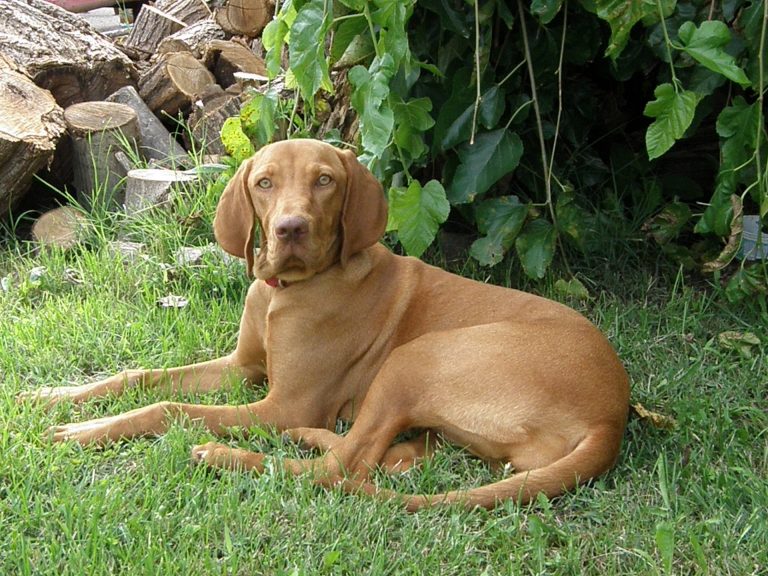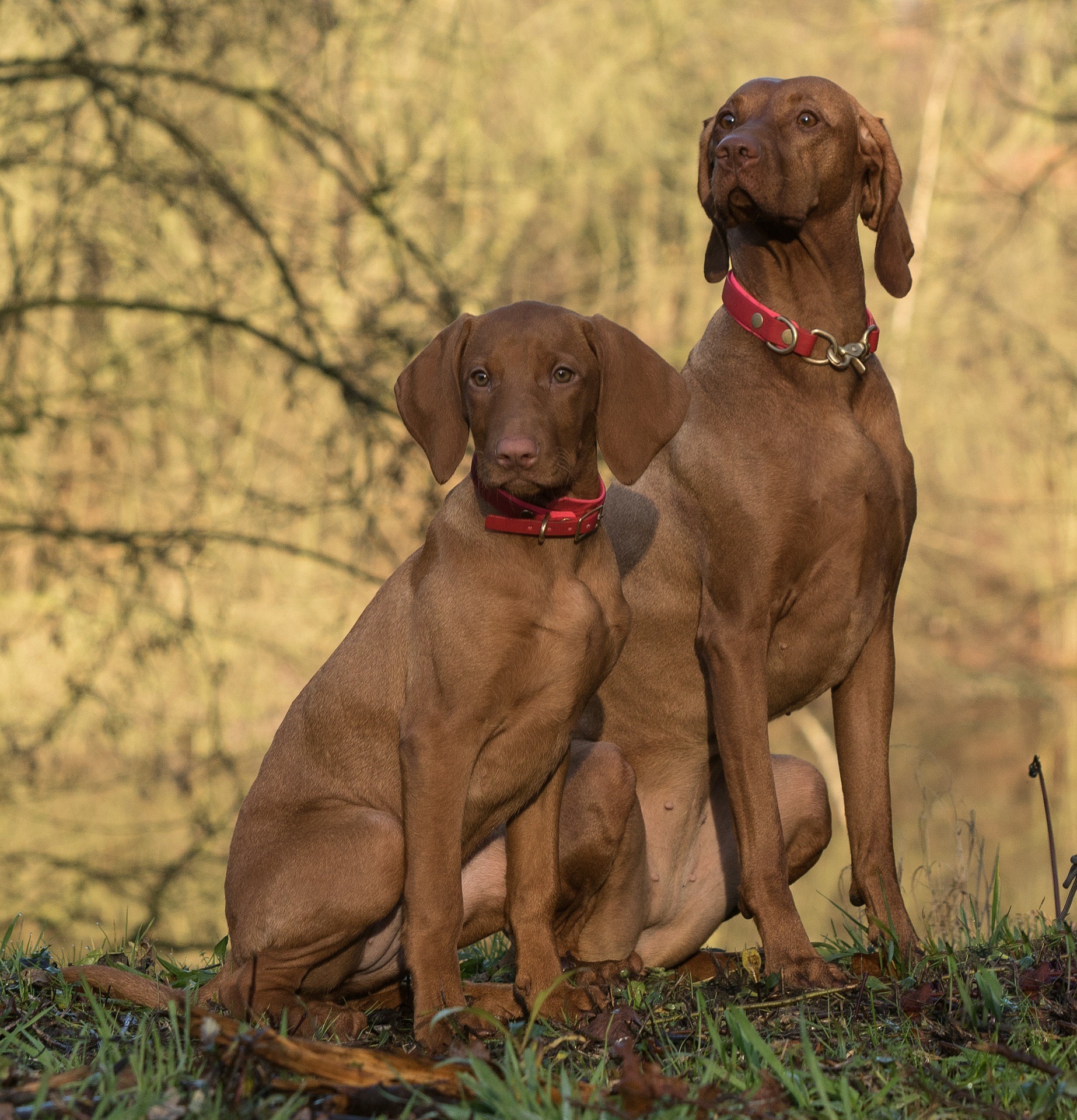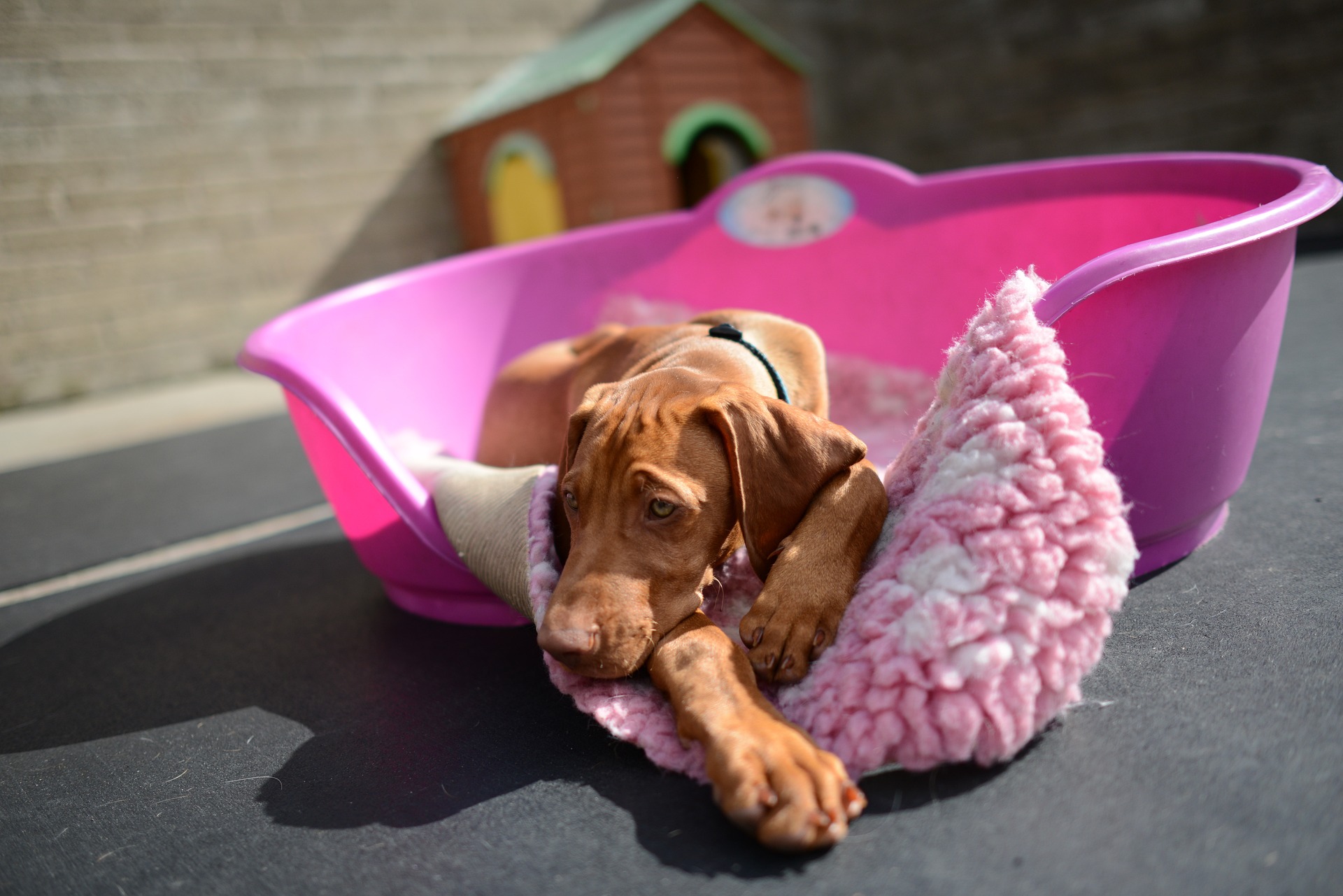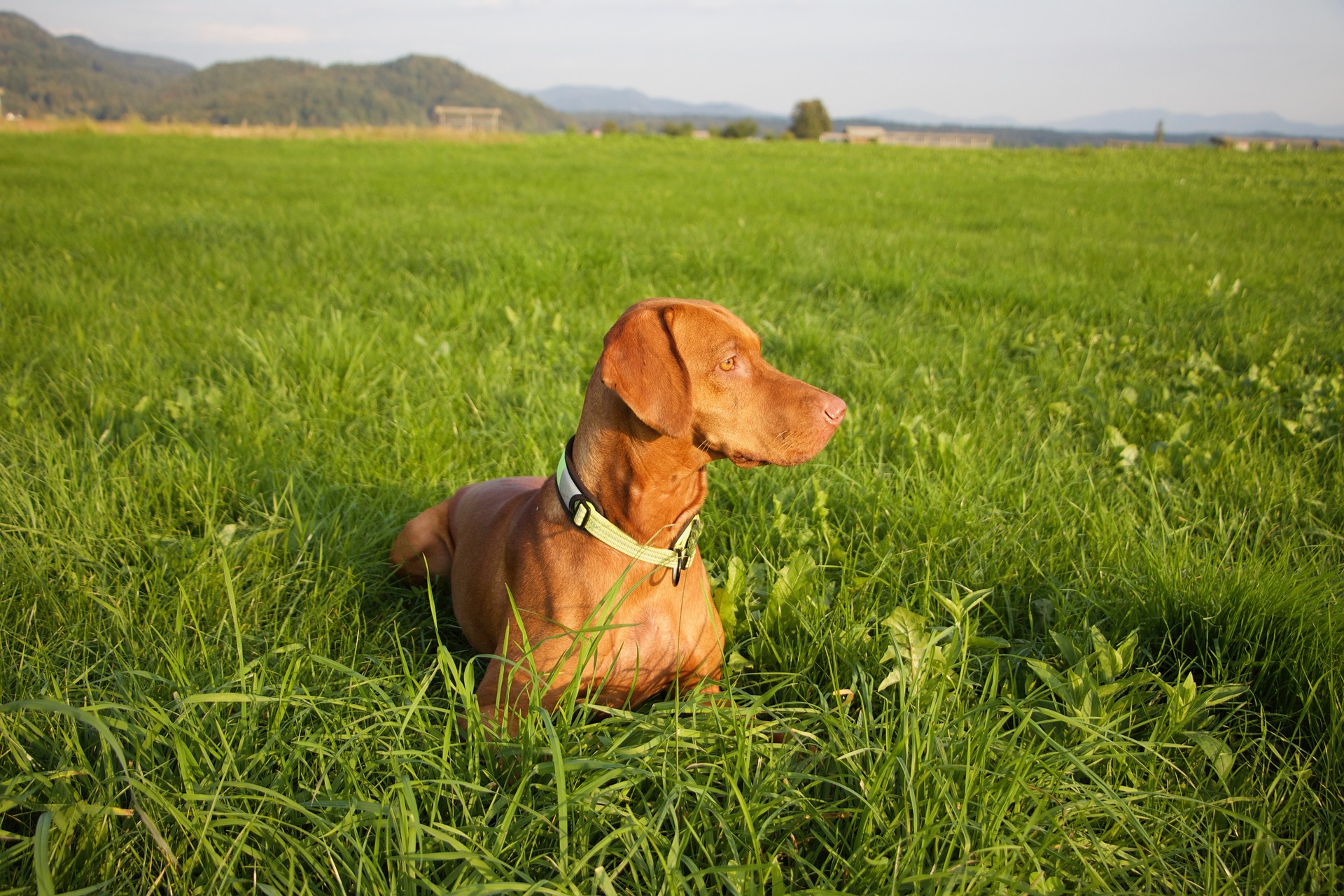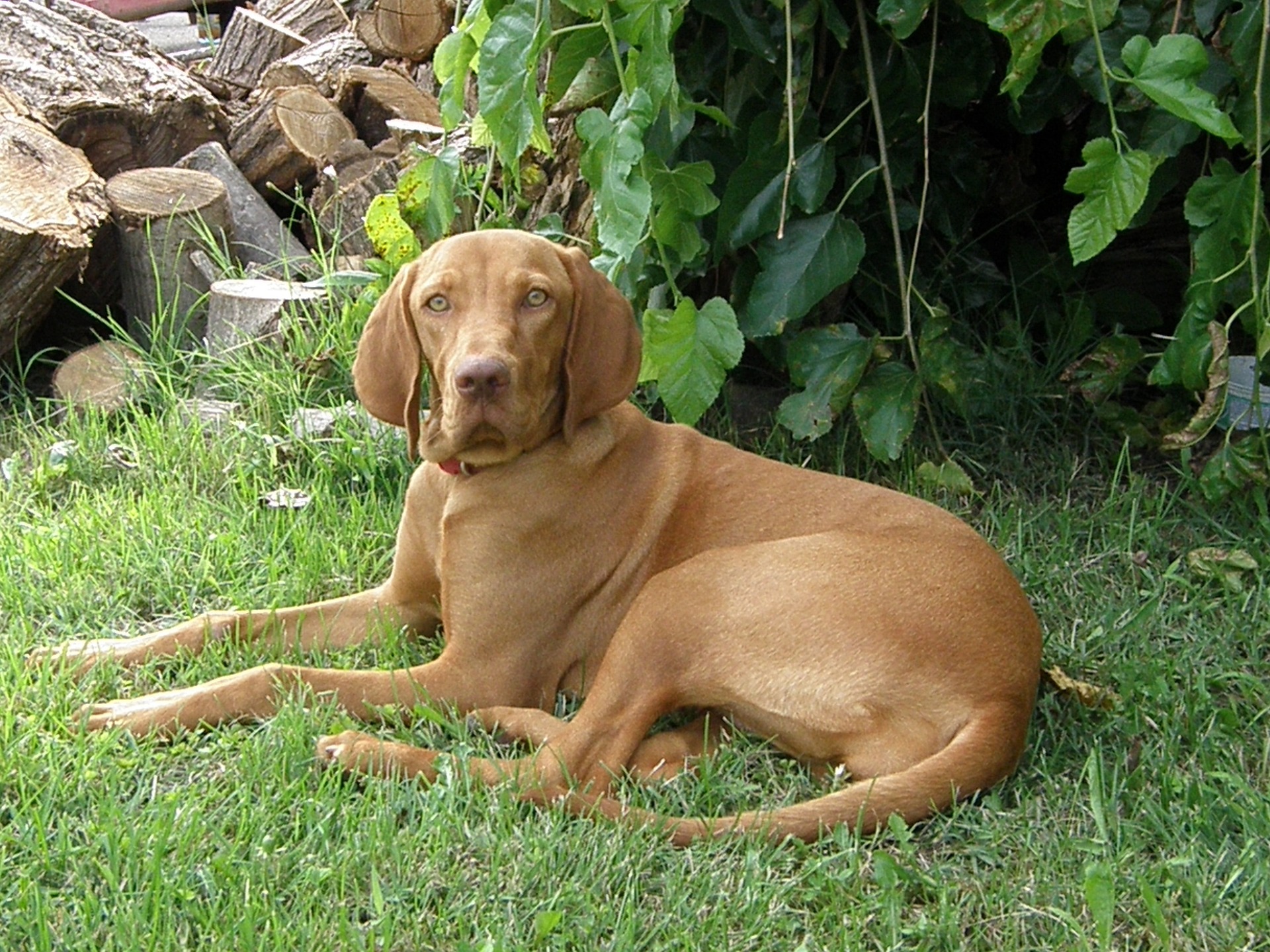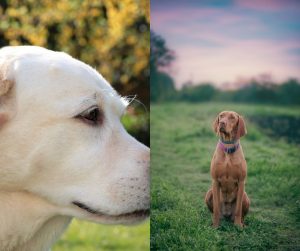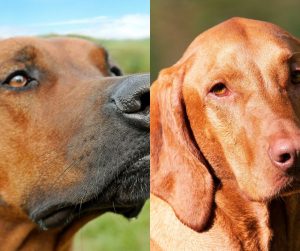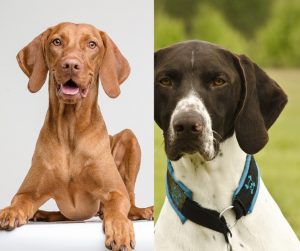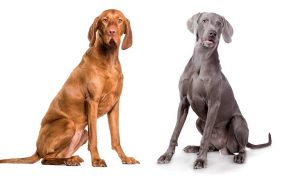The Vizsla, a dog breed that hails from Hungary, is renowned for its striking coat. This sleek and muscular hunter was bred to work in fields and waters. Vizsla coat color was an essential aspect of its hunting prowess, aiding in camouflage.
Over time, the Vizsla has become known for its warm, golden rust hue. This color is the breed standard and a striking feature that captures the admiration of dog enthusiasts around the world. The coat color reflects the Vizsla’s heritage and serves as a signature of this affectionate and loyal breed.
While the standard golden rust is the most recognized shade, the Vizsla can exhibit a range of tones within this palette. From the lighter golden to the darker rust, the variations in Vizsla coat color can be subtle but are all equally enchanting. They carry a graceful presence, with a coat that gleams in the sunlight, adding to the Vizsla’s regal and athletic appearance.
As a breed that thrives on companionship and activity, the Vizsla’s coat is just one of the traits that make it a beloved pet and an adaptable companion for all kinds of fun and adventure. Let’s take a look at all possible Vizsla colors.
Key Takeaways
- The Vizsla’s coat color is deeply rooted in its Hungarian origins
- Golden rust is the breed’s standard and most recognizable color
- This dog breed is admired for its versatility and affectionate nature
History and Origin
The story of the Vizsla puppy, often known as the Hungarian Pointer, is deeply rooted in Hungarian history. This breed, cherished for its striking golden-rust coat and keen hunting skills, shares a long-standing bond with Hungarian culture, often linked with nobility and the historic Magyar tribes.
Hungarian Roots
The Vizsla’s ancestry can be traced back to the early Magyar tribes who settled in modern-day Hungary. These dogs were not just pets but vital hunting companions, renowned for their excellent pointing and retrieving abilities. Over the centuries, they were often associated with Hungarian kings and nobility, symbolizing high status and refined taste in dogs.
Breed Development
During the chaos of World War II, the Vizsla breed faced near extinction. Dedicated breeders in Hungary and emigrants took painstaking efforts to preserve these dogs. Post-war, the breed began to flourish once more due to the determined efforts of these enthusiasts. A significant moment in their history is the recognition of a Vizsla, Nitro’s First Class Act (Classy), who made its mark by winning an American Field Championship in California, showcasing the breed’s esteemed abilities.
Nowadays, Vizsla are part of the same pointer dog breeds group like the German Shorthaired Pointer, Irish Setter, Weimaraner, and Rhodesian Rhidgeback.
Breed Characteristics
In exploring the Hungarian Vizsla dog breed, one cannot help but notice their distinct physical traits and the vibrant energy that hints at their agreeable temperament. These characteristics make them both a visual delight and a joy to interact with.
Physical Attributes
The Vizsla is a medium-sized dog with a noble and athletic build that immediately captures attention. They typically don a short, smooth, and dense coat that comes in an enticing golden rust color. The breed standard outlines some specific physical attributes:
- Height: Males stand between 22 to 24 inches, while females range from 21 to 23 inches at the shoulder
- Weight: Males weigh between 55 to 60 pounds, and females are slightly lighter, usually weighing between 44 to 55 pounds
- Coat color variations: Although the golden rust is the most common and standard color, shades may vary among individuals
Personality and Temperament
Vizslas are known for their friendly and affectionate nature, often forming strong bonds with their families. They are sometimes called “velcro dogs” due to their desire to be near their owners. A glimpse into their personality reveals:
- Energy: They possess high energy levels and thrive on exercise and play, making them suitable for active families
- Sensitivity: The breed is sensitive and responds well to positive training techniques
- Intelligence: Vizslas are quick learners and are recognized for their smart and willing-to-please personality
- Interaction: Their friendly demeanor extends to children and other pets, making them excellent companions
- Watchdog Ability: Alert and perceptive, they can be good watchdogs, notifying their family of visitors or unusual events
Coat and Colors
The Vizsla breed’s coat is as distinctive as its heritage, with a spectrum of colors that stand out in the canine world. These warm-toned hues not only define its appearance but also its grooming needs.
Color Spectrum
The color range of the Hungarian Vizsla breed is quite specific. Most Vizslas flaunt a coat in shades of golden rust, a color that appears as a rich, warm hue much like autumn leaves. This signature color can vary slightly from dog to dog, and it’s what one typically envisions with the breed. While golden rust is the standard, some may have deeper red or mahogany tones, and occasionally, lighter golden hues can be seen as well. With that, we can conclude the three main Vizsla colors are:
- Golden Rust Vizsla
- Red Vizsla
- Golden Vizsla
Pigmentation Variations
Vizslas can exhibit a few pigmentation variations within their coat colors. Some may show relatively subtle changes as white markings on the chest and feet, but those are less desirable for show standards. The color of their nose, eyes, and nails typically blends harmoniously with their coat, often leaning towards shades of brown that complement their overall rust or red coloring. Despite these variations, Vizslas do not have an undercoat, and their coat remains a single layer.
The American Kennel Club accepts only three colors, those are the Golden Rust Vizsla, Golden Vizsla, and Red Vizsla. Variations that might occur due to cross-breeding are not accepted.
Grooming Needs
When it comes to grooming, the Vizsla puppy is quite low-maintenance. Their short, smooth coat makes them less prone to shedding and means they don’t require the frequent grooming that dogs with longer or thicker coats might need. However, they still appreciate a good brush-down to remove dirt and loose hairs, and it’s a wonderful way to bond with these affectionate dogs. Regular grooming also helps to distribute natural oils, keeping their coat shiny and healthy.
Health and Care
When it comes to the health and well-being of a Vizsla, owners should pay particular attention to their pet’s exercise needs and be aware of common health concerns. Given the Vizsla’s high-energy nature, ensuring a proper routine and understanding potential health issues are key to a happy, healthy dog.
Exercise Requirements
The Vizsla is a breed that thrives on activity and engagement. They are renowned for their high-energy levels, requiring regular, vigorous exercise to maintain their well-being.
Ideally, a Vizsla’s exercise regimen should include:
- Daily walks or jogs: At least 30 minutes to an hour of walking or jogging to maintain their fitness
- Playtime: Frequent play sessions in a secure area where they can run freely
- Mental stimulation: Puzzle toys or training sessions to keep their minds sharp
Failure to meet their exercise needs can lead to a Vizsla exhibiting behavioral issues due to pent-up energy.
Common Health Concerns
Vizslas are generally healthy, but they are predisposed to certain health conditions. Being aware of these concerns can help owners be proactive about their pet’s health:
- Hip Dysplasia: This is a genetic condition where the thigh bone doesn’t fit snugly into the hip joint. Regular vet check-ups and maintaining a healthy weight can help manage this condition
- Epilepsy: This neurological disorder can cause seizures. While it can be concerning, epilepsy can often be managed with medication
- Hypothyroidism: An underactive thyroid gland can lead to issues such as obesity, lethargy, or reproductive problems. Regular thyroid screening is beneficial
- Life Expectancy: Vizslas have a life expectancy of around 10 to 14 years. With proper care, they can enjoy a full lifespan
While Vizslas are not hypoallergenic, regular grooming can help reduce shedding and keep their coat in good condition.
Training and Activities
When it comes to Vizslas, their intelligence and energy require a tailored approach in dog training and a robust schedule of physical activities. They thrive on interaction and challenges, which makes them excellent participants in a variety of canine sports.
Training Tips
Training a Vizsla should start early, taking advantage of their natural intelligence and eagerness to please. Consistent, positive reinforcement methods work best with this breed, as they are sensitive and respond well to rewards.
Obedience training is crucial, not only for good manners but also as a foundation for other activities.
It’s important to remember that a Vizsla might use their intelligence in clever ways, so keeping training sessions engaging and varied will help maintain their focus.
- Start with basic commands like sit, stay, come, and heel
- Use treats and praise to reward good behavior
- Keep sessions short and fun to avoid losing their attention
Canine Sports
Vizslas are well-suited for a variety of canine sports that channel their physical prowess and mental sharpness.
Agility competitions are a perfect fit, offering an outlet for their speed and coordination.
They tend to excel in rally as well, which combines obedience and agility tasks.
For owners interested in more specialized training, Vizslas can be trained as watchdogs, therapy dogs, or even guard dogs.
- Agility: Navigating obstacle courses improves fitness and mental acuity
- Rally: Enhances obedience skills through a course of designated stations
- Versatility: Their athletic and intelligent nature makes them adaptable to multiple roles such as watchdogs and therapy dogs
In every activity, the bond between a Vizsla and its owner will deepen, solidifying their reputation as loyal and affectionate companions.

